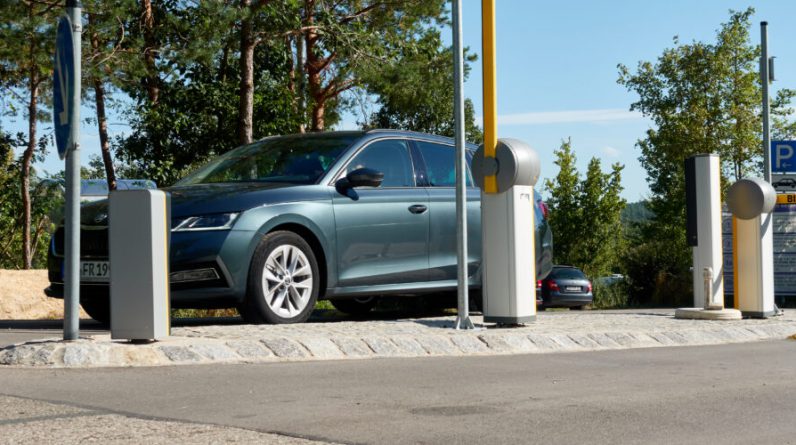
Artificial intelligence (AI) and machine learning (ML) are rapidly transforming business processes across all sectors, enabling greater personalization, automation and insights in diverse areas.
The world’s top organizations are investing heavily in developing next-generation AI solutions, sparking an innovation race across every industry. AI promises to revolutionize everything from manufacturing and healthcare to retail, education and cities as organizations look to find new ways to apply these technologies to boost productivity and efficiency.
The security industry’s license plate recognition (LPR) technology — a system designed to automatically read vehicle license plates — is no exception. From enhancing accuracy to enabling new functions and capabilities, these advancements represent a significant leap forward in LPR systems and operations.
Initially developed for vehicle monitoring through narrow pinch points, LPR systems use cameras and software to detect, read, and store license plate information from passing vehicles. This technology combines image capture with processing algorithms to convert images into alphanumeric characters.
——Article Continues Below——
With recent AI and ML advances, LPR solutions continue to improve in processing speed and usability. Today’s solutions deliver higher accuracy rates, greater flexibility across a diverse range of operating environments, and seamless integration with a wide selection of camera and third-party software integration options.
LPR Technology Can Now Capture More Information
In addition to capturing license plate numbers, today’s smart LPR systems can extract vehicle details like make, model, and color. Many cities use this technology to detect stolen vehicles, combining descriptive features with license plate data, increasing accuracy, and reducing false positives.
The increased accuracy and scope of detectable information gives organizations enhanced search, analysis, and real-time monitoring tools. From forensic investigations to proactively identifying vehicles of interest, LPR offers indispensable support across many user sectors.
Related Article: Video Surveillance Survey Finds AI, the Cloud, and LPR Gaining Traction on Campuses
Healthcare facilities, for example, use LPR for patient/visitor parking and for monitoring vehicle flow management around emergency areas. Schools deploy LPR to regulate campus access and parking. Retailers leverage the technology to identify repeat offender vehicles tied to crimes and to track time-on-premises data.
Meanwhile, law enforcement relies heavily on LPR for location tracking and identification. Even niche applications exist, like an Australian resort using LPR to catch repeat litterers by monitoring parking time limits and waste violations.
Today’s flexible LPR solutions allow both general and specialized uses. Most organizations managing facilities can benefit from forensic analysis of incidents and proactively mitigating issues by flagging vehicles of interest. From casinos to banks to large private campuses, LPR offers universal support for monitoring known and unknown vehicles.
License Plate Recognition Also Streamlines Operations
As cities seek to elevate services through advanced video technology and data analytics, LPR emerges as an indispensable tool to improve safety and streamline daily management. When strategically deployed across urban infrastructure, AI-enabled LPR cameras assist cities by:
- Optimizing parking: LPR automatically logs every vehicle entering and exiting parking facilities. Alongside heightened security, this enables efficient enforcement of permissions, fees, and access controls.
- Streamlining tolls: LPR systems prove vital for high-speed toll roads by processing vehicles in real time. Capturing plate data regardless of speed, they can tally tolls and seamlessly issue nonpayment fines.
- Tracking fleets: From buses to snowplows, LPR offers greater oversight in monitoring municipal vehicles. Location tracking optimizes routes and fleet use while providing data to boost efficiency.
- Speeding up investigations: By tracking vehicle movement across a city, LPR offers valuable evidence for law enforcement. Detectives can swiftly trace suspects’ cars near locations relevant to an investigation.
- Beyond license plates: The meta data allows for transportation planning, roadway engineering, traffic management, and more.
Whether deploying video analytics to assist first responders, improve traffic flow, audit contracted services, or maintain accountability — responsible implementation of these tools allows cities to elevate nearly every function. Citizens also benefit through improved safety, accessibility, and transparency.
Related Article: Designing Pedestrian-Friendly Parking Lots
The province of Tlaxcala, Mexico, recently combined smart cameras with analytic software to drastically shorten response times to traffic incidents, reducing related congestion and emissions. Meanwhile, the city of Vicente López, Argentina, uses capabilities like traffic monitoring, vehicle tracking, and waste overflow alerts to optimize transportation flows, parking, routing, and sanitation.
Both municipalities also employ sophisticated integrations between diverse IoT-type sensors, data streams, and dashboards to enable informed, unified responses.
By increasing automated oversight of critical services, cities gain heightened situational awareness. Just as AI unlocks security potential, the same capacities that analyze behavior, recognize license plates, detect anomalies, and forecast problems can similarly revolutionize municipal management. Beyond current applications, AI and ML can power new LPR capabilities that create opportunities like:
- Predictive analytics that can help detect suspicious behaviors or events before they occur by learning patterns. If a vehicle of interest related to previous criminal activity enters a gas station, the system can prompt an alert to prevent a potential theft.
- Multimodal LPR combines video, access control, and other data to establish context. This analysis reveals insights to improve safety, security, and operations.
- With lane-based LPR, cities gain rich data to optimize traffic flow. Combined with signals, congestion can be eased, and emergency vehicles can be given priority.
- The automation benefits of LPR also enable subscription and pay-per-use business models for parking, toll roads, car washes, and more. Everything from time-on-premises to VIP recognition becomes possible.
What Does the Future Hold for LPR?
The security industry is now undergoing an accelerated evolution in AI and machine learning. Systems are analyzing and bridging the gap between layered video, transactional, and audio data. This transition from reactive to proactive will soon reshape video security with new AI capabilities like:
- Scene analysis: Instead of merely detecting individual objects, AI will provide contextual scene information to enable smarter video analytics.
- Sensor analysis: By combining data from diverse modalities (video, thermal, audio, IoT sensors, and LIDAR light detection and ranging), multimodal AI can draw insightful conclusions or accurate predictions about people, vehicles, behaviors, and more.
- Synthetic data: Artificially generated rather than produced by real-world events, synthetic data is valuable because it helps to reduce bias by building diversity into the training data that may not be found in the original, factual data. Another benefit of synthetic data is that it protects the privacy of individuals and avoids the consent issues that arise from using real consumer information without permission or compensation.
Campuses Need Unified Solutions
While LPR accuracy continues to increase when combined with AI and ML, organizations still need tailored solutions aligned to their requirements — no single technology or software solves every use case. Large facilities often require multiple customized LPR approaches for complete vehicle visibility.
For example, a stadium may need various plate recognition capabilities for public parking, player parking, delivery access, and more. These different use cases and environments combined with various technologies and sensors necessitate unique LPR considerations and instillations.
This is where open platform video management software (VMS) has key advantages. Data-driven, open platform video management software integrates built-in and third-party LPR engines while unifying the user experience.
Related Article: Security Executives Want Integrators to Be Long-Term Partners, Not Just Salespeople
With an open platform VMS, organizations gain complete LPR oversight through a single pane of glass. Data and alerts from different LPR software consolidate for centralized monitoring, investigation, and control — eliminating the need to toggle between separate systems and interfaces.
With an open platform VMS as the core, organizations can customize LPR to serve their specific use cases while benefiting from a unified view and operation. And as innovative capabilities emerge, expanding and upgrading systems becomes simpler.
While AI and ML will continue advancing LPR possibilities, choosing open platform video management software will enable integrators and end users to control how to best apply these technologies based on their needs.
AI Is Accelerating Innovation and Capabilities
Having first emerged in the 1970s, license plate recognition technology has been improving steadily for decades, but recent artificial intelligence advances are set to rapidly accelerate capabilities — kicking LPR innovation into overdrive.
As AI technologies continue to rapidly advance, LPR will shift from reactive monitoring to proactive analytics and predictive intelligence. And today’s unified, data-driven, video platforms will consolidate these many layers of data to give users unmatched visibility for making informed decisions.
LPR systems have graduated from merely reading license plate characters to comprehensively assessing scenes with artificial intelligence.
Jason Tyre is business development manager, cities, for Milestone Systems. This article originally appeared in CS’ sister publication, Security Sales & Integration and has been edited.
Note: The views expressed by guest bloggers and contributors are those of the authors and do not necessarily represent the views of, and should not be attributed to, Campus Safety.








